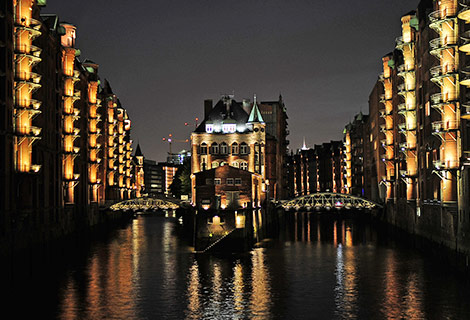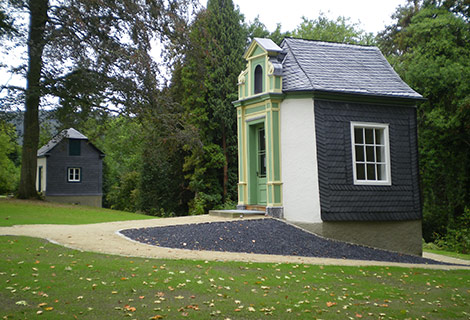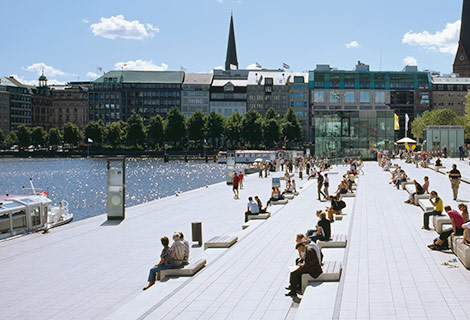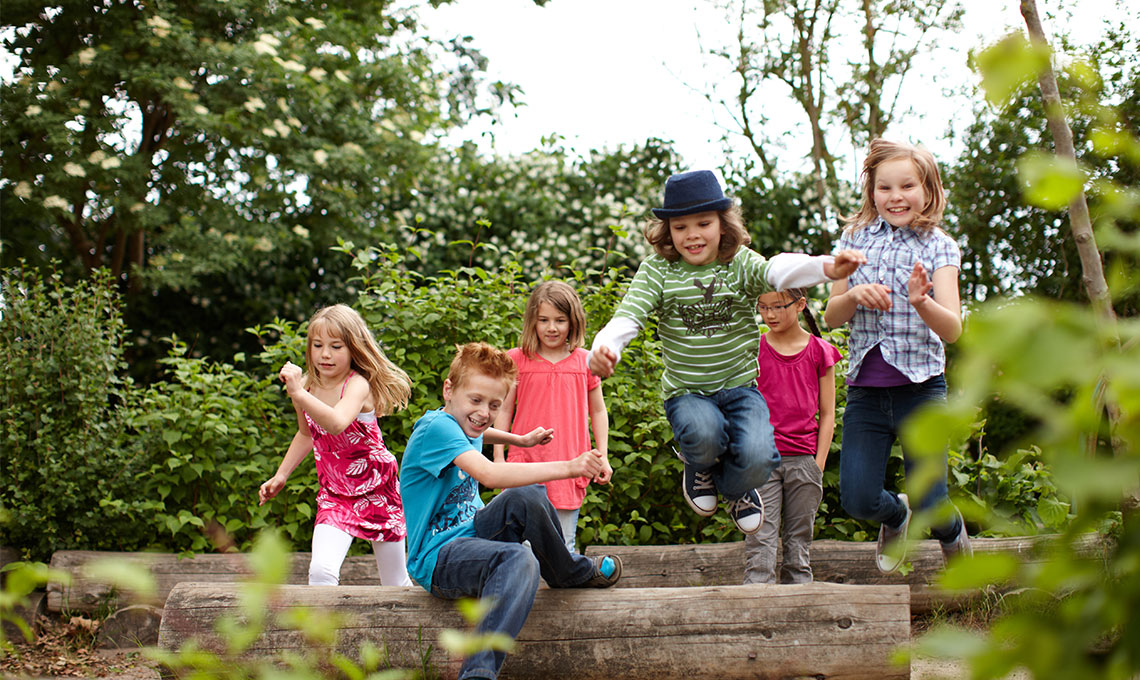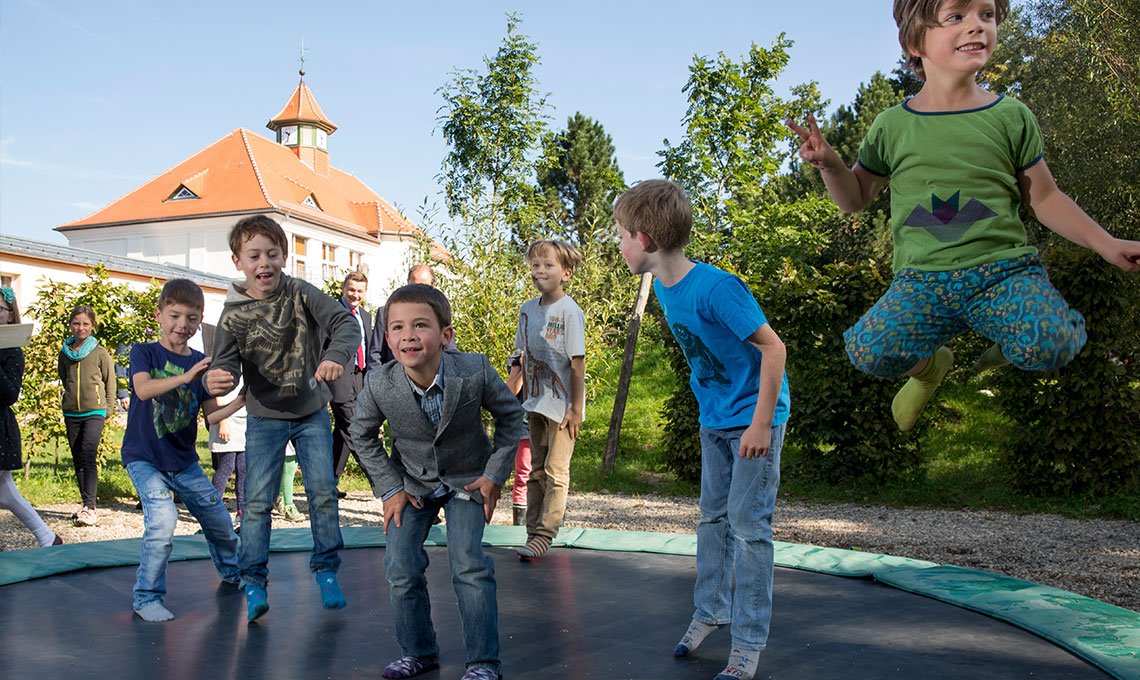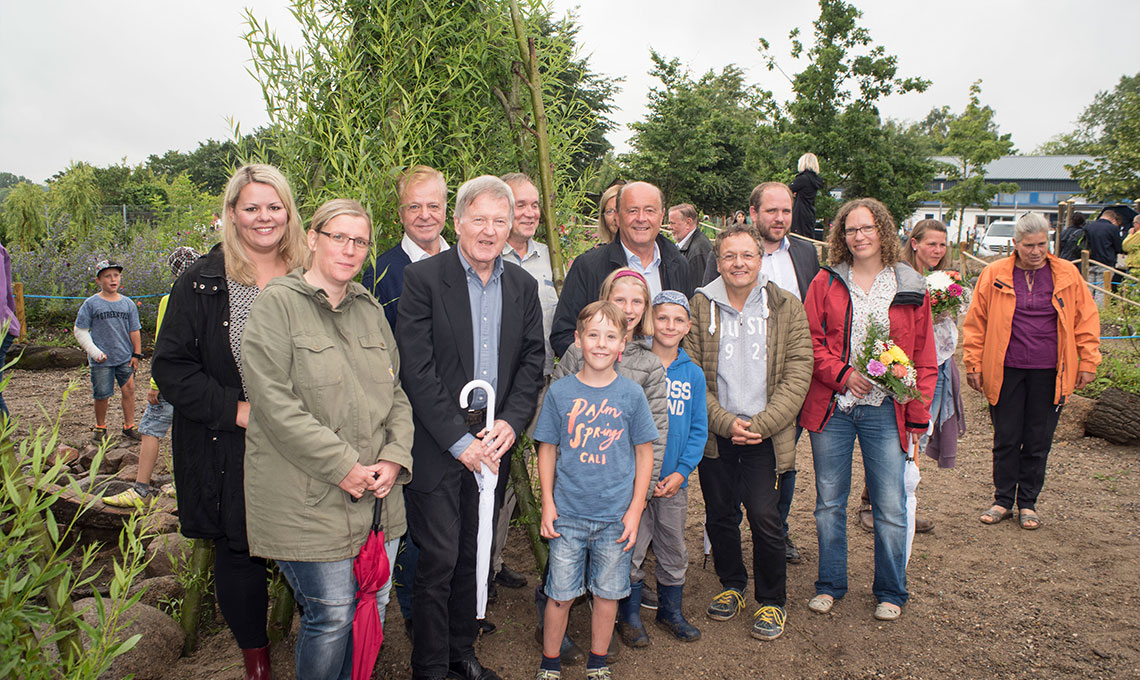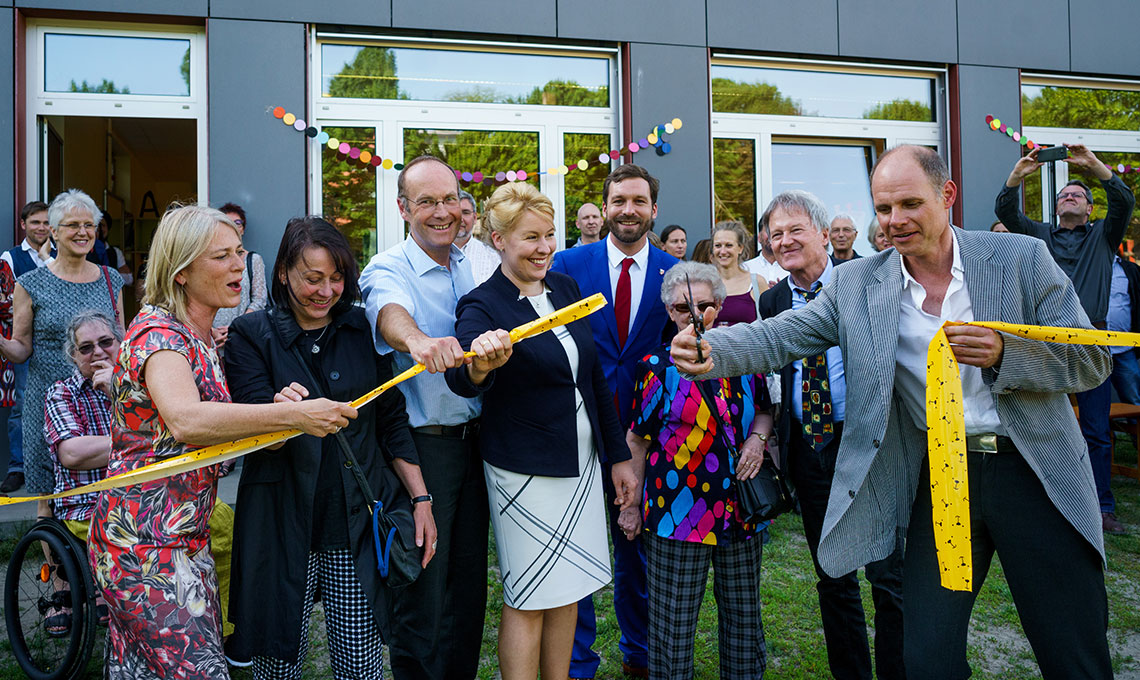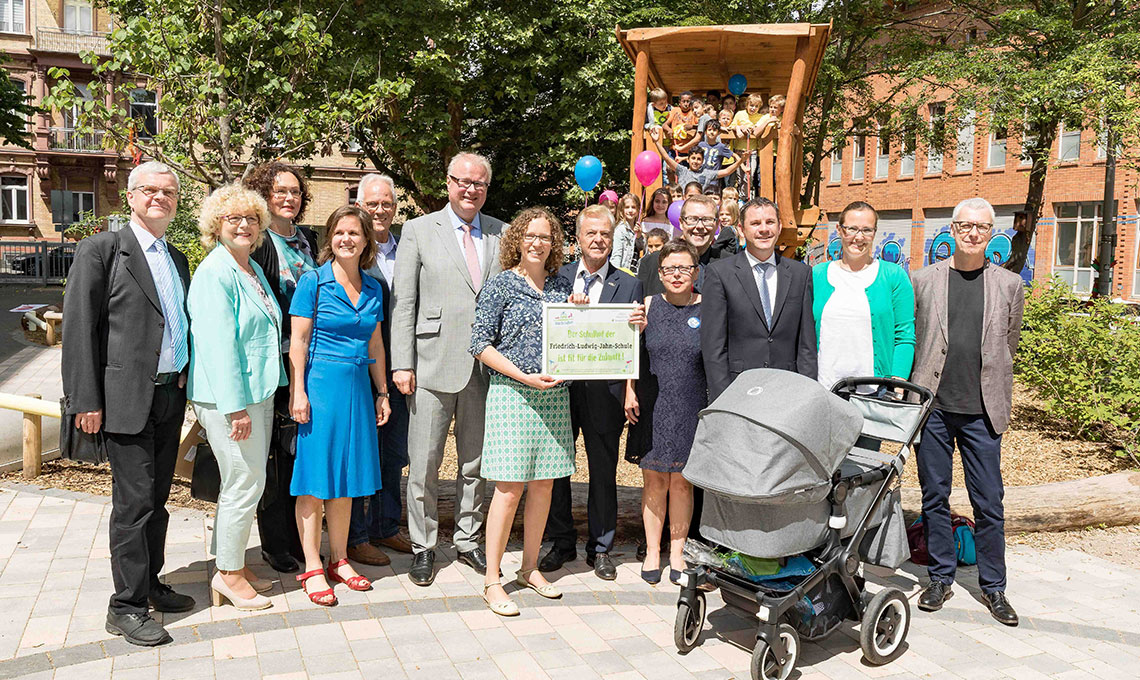Projects
Following an evaluation of its activities to date, the Foundation is committed to bringing a sharper focus to its support and promotion activities in public urban spaces. These activities can be assigned to the individual core themes of the Foundation – light, green or developed space - or simultaneously to more than one of these themes.
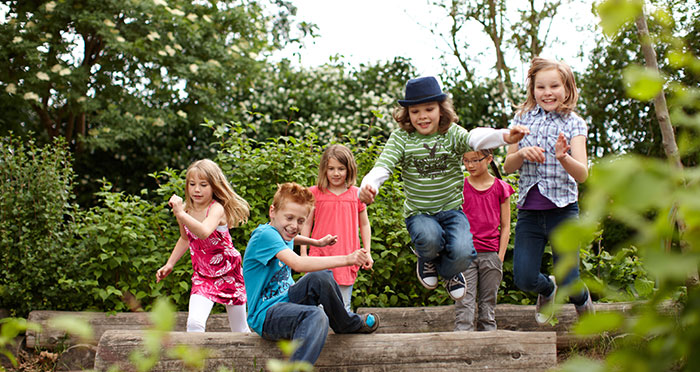
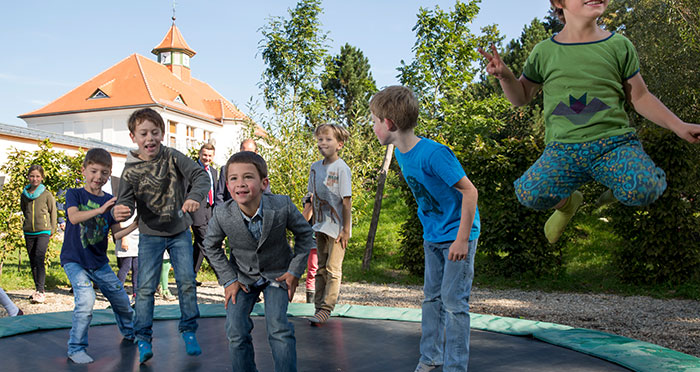
Federal "YourSchoolyard" initiative
Make your schoolyard fit for future!
When asked about "beautifying" their own schoolyard, 82 percent of school students said they would roll their sleeves up and lend a hand. This is the finding of a Forsa survey commissioned by the "Lebendige Stadt" Foundation and DUH German Environment Aid organisation, who then proceeded to launch the nationwide German initiative called "YourSchoolyard". Around 250,000 euros are being made available for the project, which enjoys the patronage of Federal Minister Dr. Barbara Hendricks. One element of the initiative is the nationwide competition entitled "Schoolyard of the Future".
Five hundred school students from year 1 through to year 10 were asked about their schoolyards in a survey commissioned by the DUH and the "Lebendige Stadt" Foundation. On the surface, they seemed to be quite happy with their schoolyards – after all, most of them only know their own schoolyard and have no way of comparing it to others. When the students were asked in more detail, however, the deficits soon became apparent: almost one in two school students said that there was no quiet place to relax or nowhere they could be creative, for example. There said there was also room for improvement with regard to the sports equipment and pitches. At the same time, however, a remarkable 82 percent of respondents expressed their willingness to play an active part in improving their schoolyard and making it more attractive. Sufficient reason for the "Lebendige Stadt" Foundation and the DUH to set up a nationwide initiative for the "beautification" of schoolyards.
"As there is an ever-increasing number of all-day schools in Germany, it is all the more important to ensure that, with children spending more time at school, the quality and facilities of schoolyards are improved", says Alexander Otto, Chairman of the Board of Trustees of the "Lebendige Stadt" Foundation. "The Forsa survey identified a particular need for improvement with regard to the relaxation and creative aspects of the schoolyards. This is the theme that my Foundation intends to address together with the DUH in order to publicise existing best practice models and encourage others to follow their lead. Because, unlike in the classroom itself, this is an area in which copying from others is actually desirable."
The project has a duration of three years. The centrepiece is the creation of www.deinSchulhof.de, the Internet portal that is designed to act as a key source of advice, inspiration and motivation for the conversion and redesign of schoolyards. This is where interested parties will be able to find things such as information on design elements, funding options and important contacts, for example. The nationwide "Schoolyard of the Future" competition looked for and collected best practice models, and all the relevant information will be available on the portal. In total, 536 schools throughout Germany entered their schoolyards for the competition. The ten best schoolyards each received prize money of 2,000 euros.
Competition
"Lebendige Stadt" Foundation and DUH German Environment Aid organisation honour "Schoolyards of the Future"
Ten schools receive prize money totalling 20,000 €, Federal Minister Dr. Barbara Hendricks acts as patron
Schoolyards don't have to be expanses of boring concrete. Proof of this is provided by the many schools in Germany that took part in the "Schoolyard of the Future" competition, the ten winners of which have now been announced. The "Lebendige Stadt" Foundation and the German Environment Aid organisation (DUH) looked for Germany's most attractive schoolyards and received 536 entries. The patron of the competition is Germany's Minister for Building and Environmental Affairs, Dr. Barbara Hendricks. In recognition of their efforts and achievements, each of the ten winning schools received a cash award of 2,000 euros.
"Green areas in the town and in the schoolyard are important for the well-being of young and old. I am delighted that so many schools use their outdoor facilities and create green spaces tailored to the needs of young people. These locations are enormously important, and not only in big cities", says Federal Minister Dr. Barbara Hendricks.
The winning schools:
- Pater-Alois-Grimm-Schule Külsheim, Baden-Württemberg
- Stephen-Hawking-Schule Neckargemünd, Baden-Württemberg
- Gymnasium Herzogenaurach, Bavaria
- Grundschule am Baumschulenweg, Bremen
- Eugen-Kaiser-Schule Hanau, Hessen
- Dietrich-Bonhoeffer-Schule Pulheim, North Rhine-Westphalia
- Gesamtschule Holweide, North Rhine-Westphalia
- Kosmos-Bildung Münsterlandschule Tilbeck in Havixbeck, North Rhine-Westphalia
- Lebenswelt Schule Zwenkau, Saxony
- Eichendorff-Schule Kronshagen, Schleswig-Holstein
Alexander Otto, Chairman of the Board of Trustees of the "Lebendige Stadt" Foundation says: "In view of the increase in the number of full-day schools, we also need to improve the quality of the schoolyards. Our winners have acted as role models and show the kinds of break facilities schoolyards need to cater to the differing interests of school students. The reason it worked so well is that the users themselves were involved in the design process. This is something other schools should learn from."
One of the key criteria for the twelve-member jury was the high-level involvement of the school students in the rejuvenation of their schoolyards. In many cases, children and teenagers drew up the plans for conversion themselves, built models and discussed drafts before swapping their pens and exercise books for wheelbarrows and shovels for several days or weeks and designing their dream schoolyard with a great deal of enjoyment. What was also important to the jury was that the students are able to experience nature directly in the schoolyard and that the schoolyard is incorporated in their lessons in an educational way. In addition, two Hamburg school classes were involved in selecting the winners.
"Planning and working together on your own schoolyard cements the social cohesion of the "school family". It gives young people self-confidence and can in the long term pave the way for social engagement in later years", says Prof. Harald Kächele, Federal Chairman of German Environment Aid organisation DUH.
You can find all the information on the competition and the expert jury as well as brief profiles of the winning schoolyards at www.deinSchulhof.de.
Schoolyards don't have to be expanses of boring concrete. Proof of this is provided by the many schools in Germany that took part in the "Schoolyard of the Future" competition, the ten winners of which have now been announced. The "Lebendige Stadt" Foundation and the German Environment Aid organisation (DUH) looked for Germany's most attractive schoolyards and received 536 entries. The patron of the competition is Germany's Minister for Building and Environmental Affairs, Dr. Barbara Hendricks. In recognition of their efforts and achievements, each of the ten winning schools received a cash award of 2,000 euros. "Green areas in the town and in the schoolyard are important for the well-being of young and old. I am delighted that so many schools use their outdoor facilities and create green spaces tailored to the needs of young people. These locations are enormously important, and not only in big cities", says Federal Minister Dr. Barbara Hendricks.
The jury members to the competition „Schulhof der Zukunft“:
Kerstin Abicht
Landschaftsarchitektin, Pflanzenhandel Lorenz von Ehren
Heinrich Benjes
Mitbegründer Arbeitskreis Holunderschule
Gerhard Fuchs
Mitglied des Vorstands Stiftung „Lebendige Stadt“
Dr. Karlheinz Köhler
Pädagogische Hochschule Karlsruhe, Institut für Biologie und Schulgartenentwicklung
Inga Kramer
Stadt Frankfurt
Prof. Dr. Dittmar Machule
Mitglied des Vorstands Stiftung „Lebendige Stadt“
Annette Michler-Hanneken
Unfallkasse Nordrhein-Westfalen, Fachbereich Bildungseinrichtungen
Robert Spreter
Deutsche Umwelthilfe
Dr. Klaus Sundermann
Ministerium für Bildung, Wissenschaft, Weiterbildung und Kultur Rheinland-Pfalz, Berichterstatter der Kultusministerkonferenz für Schülerwettbewerbe
Jan Weber-Ebnet
Architektur und Schule Landesarbeitsgemeinschaft Bayern
Silke Wissel
Deutsche Umwelthilfe
Angelika Zauner-Kröher
Horebschule Pirmasens
